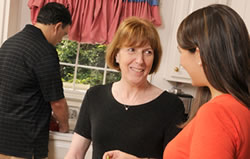Just as the parents of the Baby Boom generation were terrified years ago by what they assumed was a death-for-certain diagnosis of cancer, their middle-aged children worry today about something they believe is even worse—living long enough to develop Alzheimer's disease (AD). Only now, the worry is as much for themselves as their parents.
The disease—and its assault on the circuitry of the brain that controls memory—has supplanted cancer as the most feared medical condition among those 60 years of age and older.
With good reason: In the past decade, the death rate from stroke, heart disease, and HIV/AIDS in the United States decreased in each category by double digits, while that from AD rose by more than 33%. Then there's this: Among the top 10 causes of death, AD (now number six) is the only one that cannot be cured, prevented, or even significantly slowed.
No wonder we're terrified.
Still, this often-repeated narrative masks what's happening on the frontlines of the battle at places like Emory, one of about 30 research and clinical care centers for AD designated by the NIH. Here, knowledge about the disease is increasing exponentially, and new approaches to diagnosis and treatment reveal themselves routinely. Renewed experiments have begun with gene therapy and a vaccine, both of which might slow the process and even reverse it. Moreover, caregivers and patients are being trained to stimulate the brain's plasticity—with good nutrition, exercise, playing music, working on computer puzzles, keeping a daily memory diary—that could alter the disease's course. With advancements in these areas, there is even talk about prevention.
And finally, advocates say, there is hope that the government-funded research establishment may be getting the message: AD and related dementias need significantly more investment to deal with the anticipated threefold increase in patients as the population ages over the next 40 years.
All this leads to a more hopeful observation: There is now a very real prospect that AD—like cancer before it—is not quite the unyielding foe we all fear, especially when confronted by advancements in neuroscience and the indomitable spirit of patients and the ones who care for them.
Two patients and two caregivers
Anne Eighmie reached the century mark last year, her sixth year since being diagnosed with AD. Her daughter, Louise Turner, 70, takes care of her mom in her Decatur home.
Turner vows never to put "mommy" in a nursing home. "I'm luckier than most caregivers," she says, explaining that her mom remains mobile. They walk about a mile a day and often go out for lunch. Her daily routine includes giving her mother a foot massage just before bed. "I sleep in a room next to her, like a new mother. When she gets up, I get up," Turner says. "Every day, I'm exhausted."
 | |
Cecile Bazaz, 54, had to quit her job after symptoms of Alzheimer's disease worsened. Her husband now works from home so that he can care for her, and they enjoy frequent visits from their daughter. |
Three years ago Cecile Bazaz, an accountant and executive with SunTrust, started noticing forgetfulness on the job—missed deadlines, trouble remembering passwords—which she attributed to menopause. But when the problems worsened, her husband, Alister, thought something else might be the cause.
Tests determined that Bazaz, then 51, had early-onset AD. She quit her job and went on long-term disability. Her husband found ways to work from home to be close to her. Now she is unable to read, drive a car, or perform other daily functions.
"We're in this for the long haul," Alister Bazaz says. "We don't accept that there is nothing to be done. We will do whatever is necessary."
Eighmie and Bazaz illustrate the scope of the AD challenge. Eighmie's longevity represents the highest risk for the disease—almost a 50/50 chance you will get it if you live long enough. Bazaz is among the 5% to 10% of patients who are diagnosed with AD before they turn 65.
In the space between are 5.4 million Americans who now live with AD or related dementias and the 15.2 million friends and family members who provide unpaid care for them valued at more than $210 billion a year.
Both patients and their caregivers are actively involved in programs at the Emory Alzheimer's Disease Research Center (ADRC)—one of only 28 such centers in the country funded by the National Institute on Aging that combine clinical care and research.
At Emory, clinicians who see patients are deeply involved in research, and scientists working to develop new methods of testing and drugs for AD often know patients by name. These patients are surrounded by a team of physicians and advanced practice nurses who work closely with families, as well social workers, neuropsychologists, and primary care physicians attempting to expand the pool of participants in ongoing research.

